The DJI Drone Ban Controversy at Hand
In the realm of drone advocacy and legislation, the Association for Unmanned Vehicle Systems International (AUVSI) stands as a towering influence, guiding the trajectory of drone policy in the United States. However, recent events have cast a shadow over AUVSI’s purported stance on drone legislation, particularly regarding unmanned aircraft systems (UAS) manufactured by DJI, a leading Chinese drone maker. At the heart of the controversy is Michael Robbins, Co-CEO of AUVSI, whose public declarations about the organization’s legislative preferences have come under scrutiny.
Note: Based on our information, AUVSI has 7,500 members worldwide. If all of these members were based in the US, which obviously they are not, AUVSI would represent less than 2% of all the Part 107 certificate holders in the US.
AUVSI’s Public Stance vs. Hidden Agendas
Michael Robbins, representing AUVSI, has consistently articulated a preference for a “timed” approach rather than an outright, immediate ban on DJI drones. This stance ostensibly acknowledges the complexities surrounding drone legislation, balancing security concerns with the operational needs of various industries reliant on drone technology. Robbins’ public statements have been characterized by a diplomatic call for a gradual transition, emphasizing the need for a balanced and reasoned legislative pathway.
Now, AUVSI does not, and I repeat, does not support efforts that would bring about an immediate ban on Chinese drones.
Michael Robbins, Co-CEO AUVSI during a recent panel discussion
And:
So again, here are some more facts. Nothing AUVSI is supporting would ban the use of PRC drones [Chinese-made drones] for drone service providers or the general public. And any suggestion otherwise is false. And nothing AUVSI is supporting would bring about any immediate ban or immediate end to the use of PRC drones by public safety. And any suggestion otherwise is false. Now, those initiatives are out there, but they’re not pushed by AUVSI. And in fact, we are actively opposing them or seeking to modify them to include reasonable transition periods.
Michael Robbins, Co-CEO AUVSI during a recent panel discussion
However, revelations stemming from a Government Records Access and Management Act (GRAMA) request, essentially the Utah version of a Freedom of Information Act (FOIA) request, tell a different story. The documents obtained challenge the consistency of Robbins’ public pronouncements, suggesting AUVSI’s involvement or support for immediate bans on DJI drones in specific legislative proposals.
This evidence points to a stark contradiction between AUVSI’s outward narrative and its behind-the-scenes activities, raising questions about the organization’s transparency and true objectives.
The Utah GRAMA Discovery
The GRAMA request in Utah, spearheaded by a drone advocate and friend of DroneXL, unearthed documents that starkly contrast with Michael Robbins’ public statements of advocating for a “timed” approach to phasing out DJI drones.
The documents illuminate a significant inconsistency, revealing that the Association of Uncrewed Vehicle Systems International (AUVSI) might not only support immediate bans on DJI drones but also seem to be steering legislation contrary to its public declarations.
Notably, AUVSI has expressed explicit support for Part 12 of SB 135, aiming to prohibit the purchase of unmanned aircraft from certain foreign entities, highlighting AUVSI’s role in shaping policy to protect Utah’s critical infrastructure and bolster U.S. competitiveness. This information points to AUVSI’s active involvement in legislative matters, suggesting a complex stance that goes beyond their previous assertions.
In an email from January 23, 2024, sent by Elizabeth Sila, AUVSI Manager, Government Affairs, to Senator Harper (R-UT), we read the following:
I’m reaching out today about your recently filed bill, SB 135. We would first like to express our support for Part 12 – Prohibition on the Purchase of Unmanned Aircraft Manufactured or Assembled by a Covered Foreign Entity. This section protects the security of Utah’s critical infrastructure and encourages U.S. competitiveness. We have an advocacy initiative, the Partnership for Drone Competitiveness, that brings together UAS manufacturers to further this goal.
AUVSI’s support for Part 12 of Utah SB 135 means that the association supports the “Prohibition on the Purchase of Unmanned Aircraft Manufactured or Assembled by a Covered Foreign Entity,” i.e. the DJI drone ban.
These findings have implications that extend beyond legislative texts and political debates; they touch on the very core of TRUST within the drone community, and the need for transparency and integrity in the advocacy efforts of influential organizations like AUVSI.

Seeking Clarity and Integrity from AUVSI
The revelations brought forth by the Utah GRAMA request open Pandora’s box of ethical and procedural questions for AUVSI. As the drone industry continues to evolve, the need for clear, transparent, and consistent advocacy becomes increasingly paramount.
The drone community deserves honesty about the legislative agendas of its leading organizations, ensuring that policies reflect a balanced consideration of security, innovation, and operational needs. The drone industry, vital for public safety, infrastructure, and beyond, stands at a crossroads. The path forward requires unwavering integrity from all involved, particularly those in positions of influence and power.
AUVSI’s Michael Robbins Statements
Michael Robbins, representing AUVSI, recently voiced his support for a “timed” approach rather than an outright, immediate ban on DJI drones, during a special online discussion.
The AUVSI discussion on “Supporting Drone Competitiveness For Public Safety Missions” took place on February 27th, 2024, and can be viewed online here.
The following drone specialists and industry insiders participated:
- Brian Harrell, VP & Chief Security Officer, AVANGRID and Former Assistant Secretary for Infrastructure Protection, U.S. Department of Homeland Security
- Vic Moss, CEO and Co-Founder, Drone Service Providers Alliance
- Kyle Nordfors, UAV Team Coordinator, Weber County Sheriff’s Office and UAV Chair, Mountain Rescue Association
- Aaron Pierce, CEO, Pierce Aerospace
- Michael Robbins, Chief Advocacy Officer, AUVSI
- DJ Smith, UAS Program Coordinator, Virginia State Police
We have included the transcript of the entire conversation below, highlighting the statements from Michael Robbins.
[00:00:01] Shannon Walker: Good afternoon, ladies and gentlemen. Thank you all so much for being here with us this afternoon. On behalf of AUVSI, welcome to today’s webinar supporting Drone Competitiveness for Public Safety Missions. My name is Shannon Walker and I’m the Director of Programs here at AUVSI. Before we get started, we have a couple of housekeeping items that we want to go over.
We are recording this webinar and a viewing link will be emailed to all attendees within the next few days. You can view all of our webinars on AUVSI’s learning and engagement platform. Val, if you are listening today and you need any technical assistance, please send a note to the webinar leader using the chat button at the bottom of your screen.
I’m sure today’s topic will come with plenty of questions and the panel will be taking those. We encourage you to submit questions at any time throughout this webinar using the q and a button at the bottom of your screen and they will be addressed as our time permits. So please note this is a different box than the chat, so please make sure that you’re submitting any content questions using the q and a, which can be found right next to the chat.
Alright, so with that I would very much like to welcome a u vs. I’s Chief Advocacy Officer Michael Robbins for some opening remarks
[00:01:19] Michael Robbins: Alright, good afternoon everybody. Thank you so much for taking the time to join our webinar. I wanna begin by thanking the A U vs I staff, particularly, Shannon and Rachel for making this possible. So thank you very much for what you do.
Now there’s been a bit of a passionate discussion in our community of late about what AUVSI is for and what AUVSI against on some key policy matters. We wanna take a moment to set the record straight and let you hear this directly from AUVSI instead of through the interpretation of others.
Last year, AUVSI launched our partner partnership for drone competitiveness with the public support of more than 40 companies. From across the drone ecosystem, we began a focused effort to shape, clarify and policies that would level the playing field for us and Allied Nation drone manufacturers and their component supply chain.
AUVSI does not see these issues or any issues as a zero sum game By listening and learning, we have developed policy ideas that promote a reasonable sustainable path towards de-risking and diversifying the drone industry, ~not decoupling entirely from the People’s Republic of China~, or as I’ll refer them today as the PRC.
AUVSI is firmly in the middle between those that want to preserve the status quo, which isn’t working very well. And those that wanna bring about an immediate ban on PRC drones, which would be extremely problematic as we saw in Florida, which was an action we resolutely opposed.
Our partnership initiative is a multi-prong effort to support policies that would encourage investment innovation and ultimately scaled production of drone supply chains within the United States and our allied partners.
It’s intended to discover paths to local employment that expands our technological bench strength and leads us to a more balanced level of self sustainment. This is important because multiple US government agencies, including the Departments of Treasury, Defense, Commerce, Homeland Security, and the FBI have made it quite clear that the continued reliance on PRC drones is a risk to national security.
Now, this is not AUVSI making this claim that is the United States government and these warnings that are not new. They start back as far as 2017 or maybe even earlier, and have increased in intensity and frequency as the scale of the threat is increasingly understood. And that’s for drones and for the whole of our nation as the government focuses on combating this threat on multiple fronts, including port security and securing the electrical grid and aircraft parts and de-risking telecommunications infrastructure from PRC technology.
Now, this isn’t about politics and this isn’t about lobbying. Those are strawman claims that are an attempt to distract from the very real and present danger. I encourage you to type volt typhoon into your search and search engine to learn more. I just don’t recommend doing it right before you go to bed because you might not sleep soundly.
Furthermore, the continued reliance on PRC drones, which have received significant and well-documented government support to further their already inherent cost advantages puts us and non PRC drone manufacturers at a disadvantage. By flooding the global market with subsidized drones, the PRC effectively holds back any other ability to attract capital and scale additional market share.
Consequently, at a time when the world has watched the incredible utility of drones and war fighting, the US does not have the ability to produce small UAS at scale to provide our war fighters with this important tool. Whereas one of our potential future adversaries can produce drones at an overwhelming mass, giving them a key advantage of modern warfare.
And I can’t imagine anyone within the sound of my voice can believe that is an acceptable situation. Further, the PRC had already shown that they’re willing to use supply chain interdiction as a coercive tool, and PRC drone software updates have aligned with communist Chinese party policy. So continuing to maintain such a heavy reliance on the PRC for critical mission tools is just not sound public policy.
So supporting policies that would generate demand for more drones, like the REPLICATOR program, the drone Infrastructure Investment Grant, or DIIG act, grant programs for public safety and other programs to incentivize drone users to transition away from PRC drones, we can spark private capital investment into drone manufacturing and begin the process of scaling the domestic drone industry that is currently struggling to scale.
Ultimately, AUVSI and our members believe that the US government should invest in drones and like they have for other key technology sectors that have been overwhelmed by PRC market flooding, including semiconductors and advanced batteries, solar panels, telecommunications, and most recently crane technology in US ports.
Now, AUVSI does not, and I repeat, does not support efforts that would bring about an immediate ban on Chinese drones. AUVSI does believe in our government’s commitment to finding a solution. UAVSI does believe in our community’s technical strength to lead us to a solution. And AUVSI does believe in our membership’s collective will to improve our nation’s economic strength and national security.
Now, PRC Drone Companies are spending a lot of money on lobbyists, lawyers, public relations campaigns, and spokespersons and social media to defend their market share in the us And that has resulted in a fair amount of misinformation making its way around, particularly on the internet. So we can certainly understand some of the concerns expressed about our positions due to the information found on social media echo chambers.
But here are the facts. AUVSI recognizes the investments in materials, time and training in drone programs across the us and that’s for First Responders in search and rescue, firefighting, critical infrastructure inspection, and other important missions. And we agree that a cutoff, an immediate cutoff from PRC drones would be harmful to those operations.
That’s why we oppose the effort in Florida to impose an immediate ban on PRC drones, and that’s why we currently oppose similar efforts ongoing right now in Iowa, Missouri, Arizona, and Illinois. And that’s why we oppose the countering CCP Drones Act in the US House of Representatives.
We know drone operators, particularly those in public safety, would be harmed by such ham-handed legislative efforts that do not include any transition periods.
Further, AUVSI does support moving certain sensitive drone operations away from PRC drones in a reasonable, thoughtful timeframe. And ideally with financial incentives to remove the burden on the operators, whether they’re in public safety or other mission operations. We trust in the work of our federal law enforcement, national security intelligence, and defense agencies that have made clear the risk of continued reliance on PRC drones for sensitive missions.
We take the word of the US government over the word of PRC drone companies. That said, we have been actively listening to our community as a whole and we understand why when you hear misinformation that would directly impact your mission, your organization, and potentially even your livelihood, why you would be so impassioned.
So again, here are some more facts. Nothing AUVSI is supporting would ban the use of PRC drones for drone service providers or the general public. And any suggestion otherwise is false. And nothing AUVSI is supporting would bring about any immediate ban or immediate end to the use of PRC drones by public safety. And any suggestion otherwise is false.
Now, those initiatives are out there, but they’re not pushed by AUVSI. And in fact, we are actively opposing them or seeking to modify them to include reasonable transition periods.
Now we know that even with our moderate position on this issue, not everyone’s gonna agree, and that’s okay. We are fortunate to live in a democracy where the freedom to disagree exists. Unlike in communist China where no such freedoms exist, and God bless the US of A.
We have a choice. AUVSI has a choice. We have chosen the greater good and we offer the will to seek the solutions to get us all there together. AUVSI is the big tent organization. As such, whenever we take a position on almost anything, some person or some user group or some sector of the industry is likely to have a differing opinion.
We recognize this as the value we gain from the diversity of our membership because we recognize that part of our responsibility is to hear a diversity of voices, and we respect the diversity of opinions.
We listen very carefully to all stakeholders. Even if we can’t always find 100% agreement, we still aspire for consensus because we are a professional, serious mission-driven organization.
At the end of the day, we still love all of you, everyone in our community because ultimately we want the same thing. drone for good and uncrewed systems for good. Even if we have different ideas on how we best get there. That is why we’re hosting this webinar today to give voice to a diversity of opinions.
Now, I don’t expect all of our panelists to agree with each other or with AUVSI, but at the end of the day, I do expect us to have a civil, respectful and fact-based conversation here and going forward.
We are all in this together. And AUVSI is committed to our collective mission to safely and securely integrate uncrewed vehicles into our future. And with that, let’s start the panel.
So joining me today are five individuals with very different perspectives and different experiences from across the UAS industry.
We have DJ Smith with the Virginia State Police, Vic Moss, the CEO of the Drone Service Providers Alliance. Aaron Pierce is the founder and CEO of Pierce Aerospace. Kyle Nordfors is with the Mountain Rescue Association, and Brian Harrell is with the Energy Company, Avangrid and is a former assistant secretary at the Department of Homeland Security.
Thank you all for joining us today, and just a reminder that questions can be posed in the q and a section of the webinar tool. So let’s start by allowing each panelist to introduce themselves and their point of view. So DJI, let’s start with you, Sir.
[00:11:43] DJ Smith: Hey, good morning. Or I’m sorry. Good afternoon. DJI Smith. I’m a, technical surveillance agent with the Virginia State Police. I also run the Unmanned Arial Encounter UAS Systems Program for the Department of Statewide.
My standpoint on this is, I think everybody in public safety has the same mindset. We’d buy USA all day long, support, USA, we’re, red, white, and blue all the way through.
The problem is the drones just aren’t to that aspect yet. our, policy with Virginia State Police were purple. We run, blue drones and we fly, foreign made drones. if we need to put a drone up in an airspace, where there’s controlled airspace or federal covered installation, we can put a blue drone up and actually alleviate any concerns from our federal partners. But we also keep a stable of foreign made drones as well, because operationally they’re a lot better at this point.
I think the US industry is coming along very quickly. They’re just not there yet. So for SLTT State local Travel Territory and drone responders standpoint, we do not support any ban or any phase out this point until the industry has time to catch up. And, we have apples to apples and orange to oranges as far as drones are compared. That’s my standpoint. Thank you.
[00:12:51] Michael Robbins: Alright. Thank you DJ. Kyle, do you wanna go next?
[00:12:55] Kyle Nordfors: Sure thing. My name is Kyle Nordfors. I am a airline captain by trade. I’m a captain on a 737, and I volunteer my time with the Mountain Rescue Association, where I’m the UAS Chairman. We cover 90 teams here in North America, including, many that are in upstate New York, traveling all the way down along the Appalachian chain. I’m also the UAS chairman or team coordinator for the Weber County Search and Rescue team, and also help the, deputies also run their program.
It’s imperative for me that we keep the absolute best tool in the hands of our first responders. And I am very much opposed to any effort to take the best tool away from our first responders. Because it’s simply saying, and this is not hyperbole, it will cost American lives if we support any type of that sort.
So my position is, that, with my aviation experience, 25 years of flying manned aircraft and unmanned aircraft, that we need to be able to keep the most capable and cost-effective drones in the hands of our first responders. Thanks,
[00:14:04] Michael Robbins: Kyle. Sorry, I was taking a few notes there. Aaron Pierce, let’s go to you next.
[00:14:08] Aaron Pierce: Thank you Michael. Aaron Pierce, one of the co-founders of Pierce Aerospace. Background both in operations, used to be a volunteer EMT and Eric, you remember, with a civilian search and rescue organization and also an entrepreneurial background in that we built our company up from working with the US government through the SBIRSTTR contracting process, and have gone head to head against some of those PRC competitors, in developing our technologies in the Remote ID and airspace detection and monitoring space.
Former entrepreneur and resident for the US Air Force, accelerator program as well. That was, run by Techstars and happy to talk about some of the perspectives that we see of there being tremendous opportunity in the industry right now to really take advantage of some of the initiatives that are happening at the DOD acquisition level.
At that government acquisition level where there’s that shift to really focus on, investing into the US and Allied drone marketplace and how from a dual use perspective, that is going to enable a tremendous amount of innovation to occur on the civilian side that can trickle out to the rest of the users across the country.
[00:15:27] Michael Robbins: Thank you very much, Aaron. Vic, let’s go to you next.
[00:15:32] Vic Moss: yes, good morning and yes it is morning here in, snowy Denver, Colorado this morning. I’m Vic Moss and I wear a whole bunch of different hats here in the drone industry. I’m the CEO of the Drone Service Providers Alliance. We are the only national, drone advocacy group for remote pilots here in the United States.
I’m also on a number of Federal Aviation Administration (FAA) panels, and I will use this, use this point or use this time to say nothing I say, should be taken as stance of the FAA. They prefer me to say that when I’m on these panels. And, I’m also on the AAC, so the Advanced Aviation Advisory Committee. I’m a photographer, videographer by trade, been flying drones for 10 years and I have become a, subject matter expert in regulation here in the United States.
Personally, I see the, country of origin ban, which really is what we’re talking about here. No matter whether it’s immediate or down the road or whatever, as an, as a, as an issue that, doesn’t really address a problem. So I’m looking forward to talking a little bit more about that as the, as the morning progresses soon in the afternoon here,
[00:16:38] Michael Robbins: All right. Thank you, Vic And Brian, over to you.
[00:16:42] Brian Harrell: Yeah. Good afternoon. my name’s Brian Harrell. I’m the Vice President Chief Security Officer for a large energy company Out of the Northeast. We operate in about 25 different states. obviously we use drones for, response recovery after hurricanes.
They’re a great tool in the toolbox, but with that, in my opinion, they also introduce, risk. Before I got here, I was the assistant secretary of the Department of Homeland Security, so I’ve seen a lot of the reports come in. Both in the, classified and unclassified space where, we’ve seen data exfiltration, we’ve seen data leakage from proprietary IT systems going overseas back to what I consider a nation state adversary, in China.
I have some stories from years ago back in 2017 when I was at a different company, in the energy sector where we saw this, in real time, after mapping some of our systems off of a nuclear facility, throughout, the southeast region.
Trying to be very high level here. but a number of federal agencies got involved, both of them with, three letters in them. And, they were very interested in what it is that, we did. We immediately took ’em offline. and gave them up to our US government counterparts, to, rip ’em down, to dissect it and, figure out, what exactly happened. And sure enough, the information left our system. We were looking at some pretty sensitive, materials and, some pictures and some mappings and schematics on the ground.
So, with that, with a kind of a DHS hat that I used to wear long ago, I was one of many stories, that we saw, especially in the critical infrastructure sector, water sector, energy sector, specifically where we’ve seen sensitive, data go overseas.
So my opinion, now, and what I have instituted here within our own energy company across all 25 states is that, we will not be using, any drone made in, China, North Korea, Iran, or Russia. And we’ve, completely banned it.
From a performance perspective. it’s mentioned earlier, I think early on maybe there was some issues. today, we have instituted a transition period, if you will. So we are, in the process of transitioning all of our, PRC drones between now and January 1st, and we think this gives the business, a great opportunity to, to go on to something a little bit different and certainly safer.
[00:19:08] Michael Robbins: Thanks, Michael. Thank you, Brian. I appreciate that user perspective and your background. So Vic, oh, did we just lose somebody? Okay. Brian’s back. Okay, Vic, you mentioned that, you don’t think that, country of origin is the real issue here, or maybe I misunderstood you, that you said maybe that’s not addressing the problem. Can you elaborate on that a little bit, please?
[00:19:32] Vic Moss: Oh, I definitely, I’d love to. The, issue is gonna be data security, right? I think we can all agree that cybersecurity data security is really the paramount issue that we need to deal with. whether it’s drones or routers or modems or whatever. Putting something out that says, hey, China bad, US good. Okay. is not addressing the actual issue.
There are ways that you can, you you, can, air gap something. You can set up cyber securities, whether it’s a US drone, whether it’s a French drone, whether it’s a Japanese drone, Chinese drone, whatever. If you’re connected to the internet, you have the ability to then gather data unless you’ve got that cybersecurity protocol set in place.
So I think the best approach would be, let’s set up, let’s put a panel together, and set up a cybersecurity protocol standard for drones, whether they’re, like I said, any of those countries I just mentioned, whether it’s that or not. And then, a make sure that every single drone that is flown in sensitive areas, I’m talking whether it’s critical infrastructure, if we ever get 2209 off the ground, or something along the lines like that, then we need to make sure, no matter which drone it is, yes, we need to make sure that drone does not do what it’s, what is being claimed of DJI and Autel basically at this point.
And then we need to make sure that if it’s not in a sensitive area, it really doesn’t matter what we’re flying, because I think that gets down to it as we’re just taking so much out of the hands of the people who do this for a living or do this to save lives that country of origin demand isn’t even addressing the issue.
[00:21:06] Michael Robbins: Well, a couple of quick responses. first, right now with the exception of Florida, I don’t think anything’s been taken out of anybody’s hands. let’s, move away from, that argument because that hasn’t happened. ~And as, as I made clear in the beginning, we don’t support anything that would bring about, immediate bans.~
Certainly want there to be, as Brian talked about, transition periods, we’re looking at bills that even have short transition periods and looking in some cases where those need to be longer to allow for, there to be an opportunity for there to be funding there, so that the burden of, making the transition, it’s not falling back on, the police departments or others in public safety.
As well as an opportunity for, non-PRC drone companies to be able to prove their technology out and showcase, that their capability gap has been closed.
We do know that, that myth is out there that, US drones are non-PRC drones just can’t compete. And certainly that was very true at, some point in the past. But, we’ve heard and from many public safety users, including at FlowCon last week down in Florida, that gap has really narrowed in some cases closed entirely.
On the issue of cybersecurity broadly, we actually, agree with the premise that, as a whole, cybersecurity needs to be a more serious issue, for this industry. And that’s why we’ve talked about cybersecurity at a number of our recent events, including from the keynote stage at Xponential at the last two years, and why we are supported supporters of a, bill introduced, in the United States Senate by Senator Warner and Thune that would, direct the National Institute of Science Technology, NIST, to create, cybersecurity standards, basic sort of minimum cybersecurity standards for drones.
The challenge with drones brought, manufactured by companies domiciled in the PRC, that you can never entirely remove the CCP from a PRC manufactured drone because that’s just not how cybersecurity works. When a product is manufactured by a company that’s domiciled in the PRC. Therefore beholden to CCP National Security Laws. There will always be the potential for back doors. There will always be the potential for software updates that completely change the, nature of the drone.
And we’ve, seen that happen where, where a drone, or a drone company has pushed out software updates, that are not what they claim to be. They don’t, they’re not actually, serving what they’re intended. They’re actually, they align with CCP policy, in the case of one, one company where, the drones were bricked in the, nation of Taiwan and on the disputed border area between, India and China. That’s not, those are not current conflict zones, but they do align with CCP policy.
So if we, as the United States were ever to get into a conflict, God forbid, because we certainly don’t want this to happen, a conflict with the PRC, those same software updates could be used. And every PRC drone in the US rendered useless, bricked, or, worse use your imagination.
So there’s a lot of reasons why a transition away from PRC drones where I think we’re all in agreement that ~an immediate ban does not make sense~ that a transition over a period of years is the way to move this industry forward and break the addiction that this country’s had on, inexpensive Chinese drones.
[00:24:23] Vic Moss: Let me ask a couple follow ups then real quick, if you don’t mind. What is your suggested transition period?
[00:24:30] Michael Robbins: Yeah, so we’ve been advocating three to four years. I think some bills have been less than that and we’ve been speaking with the authors, pushing for, longer periods of time. The, there’s a bill, I think that’s getting a hearing this week in Connecticut. that would only be about 20 months. And we’re gonna offer testimony that needs to be, a longer period of time to give, public safety users an opportunity to have a longer transition period.
[00:24:58] Vic Moss: Okay, let me insert a little bit of, a real world experience or realism into that, in that transition period. If you’re talking three to four years, that’s basically a one to two year hard line ban. Because nobody’s gonna put any effort into training, into an expense and outfitting a fleet or even know, starting a fleet, especially first responders.
The ones that are starting them now are probably the smaller agencies. I think it’s safe to say that the vast majority of first responder agencies have a very active and very useful UAS fleet.
So, if you’re gonna say, okay, let’s wait three or four years. There’s not gonna be an agency out there right now that says, you know what? We gotta wait too. So it, it is an effective ban right now, or one year or two year down the road because nobody in their right mind, no government agency in their right mind is gonna spend money on equipment or training, if they know they’re gonna have to do it all over again in 24 to three, six months.
It’s just, not feasible on that point. and you mentioned, yeah, let’s, let’s say China can’t brick all our drones. first of all, they have to be connected to the internet. So if we have the internet disconnected, then that’s not an issue.
[00:26:05] Michael Robbins: But if, who’s operating drones not connected to the internet though. That’s, not a realistic proposition. Most drones are connected to the internet either for a software or…
[00:26:15] Vic Moss: I fly offline all the time. My controller is not connected.
[00:26:18] Michael Robbins: No, maybe, not all the time, but clearly you’re connecting it to the internet on a pretty regular basis either to do a software update, download, images.
[00:26:26] Vic Moss: No, I do not download images. That’s an opt-in feature. I have a DJI fleet and one Autel. if I want to, I have opt-in to send that stuff. Absolutely. If I wanna do that, I don’t do that. if I wanna update offline, I can put it on an SD card, throw it in the drone so I’m not on, I’m not online at that point.
So that’s, that would not be an issue. In my case. But that’s that, again, that’s, a personal cybersecurity protocol, right? And that’s what we can establish. If it came to the point where China and the United States were in such a conflict that the PRC could, let’s go with what y’all are saying, could brick our drones are gonna be the least of the problems? Because we’re gonna have a global issue. That is, is, you know what? Okay, so I can’t fly. So first responders can’t necessarily fly, but that’s, if you give a list of a hundred things that’s going wrong with the world right now, that probably wouldn’t make it …
[00:27:19] Michael Robbins: I agree, but we work in the drone industry issue. I agree with you, but we work in the drone industry, so it’s always…
[00:27:26] Vic Moss: Yes, we do take this straight and I wanna make sure that we’re looking at realistic timelines. We’re looking at realistic situational possibilities. And I’ll say too, that I’ve never talked to a drone pilot to say, gimme something American to fly, gimme, let’s go. I’m true blue. Let’s do it. I have a flag right here. that’s my backdrop. What you are doing? Not you. Not you. Okay. I’m gonna say you. When I say you, I just mean in general, whatever, it’s not you Michael, not you. AUVSI. And I should also mention I’m an AUVSI Rocky Mountain Chapter Leadership.
I just wanna make sure everybody understands that too. we aren’t addressing the problem, I know I just said that. but that’s basically what we’re getting back to, is we’re just not addressing a problem. We’re putting up some of these extreme examples to illustrate what needs to be done, instead of approaching with common sense and reality and, a real true, let’s fix the problem that exists instead of just a country of origin ban.
And let’s define where these things should never be flown anyway. If, whether we’re air gap, whether we have the cybersecurity set up. that’s where I’m coming from. And, it frustrates me to, to the point where it, whether DC or… there’s actually 10 active bills right now in the United States, that in one way or another do talk about either funding or use of drones from communist China.
[00:28:50] Brian Harrell:Michael, this is Brian. I’d love to jump in here. Hey, and frankly, I would ban these things, yesterday, if I could. And, before somebody says, oh, you don’t understand law enforcement. I was a deputy sheriff in Los Angeles years ago, so fully understand the law enforcement needs.
However, from a cybersecurity perspective, China is not our friend. To state the complete obvious, in the chat earlier I saw the word, volt typhoon. I don’t exactly know what the context was. but Volta pho has been, seen, bounced off our firewall 250 times in the last 60 days. We see millions of pings on our firewall per day from China.
Now, a lot of that is bought traffic. A lot of that is active scanning, but people are looking for, PRC members, people from China. they are looking for the enemy avenue to exploit in critical infrastructure. So where I can take a chess piece off the table where I can reduce risk, that’s what we want to do, right? That’s money well spent.
[00:29:56] Vic Moss: So basically you’re saying those pings that you’re getting your cybersecurity’s working,
[00:30:02] Brian Harrell: It is.
[00:30:03] Vic Moss: So, why don’t knock that out to the drone industry?
[00:30:04] Brian Harrell: It is. Knock on wood, they are absolutely working, but, you know. I suspect, before Facebook, YouTube, the NSA, OPM, before all of them were attacked by, Chinese groups, they were probably saying the exact same thing.
[00:30:20] Michael Robbins: Yeah, I’m looking at the questions. I’m not seeing any direct questions. I’m seeing some comments in the questions.
[00:30:33] DJ Smith: Can I chime in real quick, Mike? Okay. So Brian, I get from the DOD cyber standpoint, critical infrastructure, totally get it. Okay. From the SLTT public safety standpoint, what’s the threat matrix. If we, air gap our systems from any downloads to our networks? Where’s the threat matrix at for somebody seeing a reconstruction of a car accident, or even an arrest taking place? Where is the threat matrix in that scenario? If we can securely cyber or cyber secure our drones by air gapping ’em from the network, whether we do it through VPN connection or whatever the case is. Then where, else are the threats at other than they’re made of a country of origin.
[00:31:12] Brian Harrell:Yeah. I’m, very sensitive to the fact that, you fly a drone because you have a barricaded suspect and you have ’em, you have that drone looking at the back door because you don’t want the suspect to leave and you wanna have law enforcement, have full situational awareness. I get it. I’m very sensitive actually, to the life safety component, to all of this.
But conversely, I think the performance standards for some of the other drones out there are, just as good today. And we can fly those without China seeing our schematics, our maps, and some of our sensitive data. Do I have a great, yeah but for you, when you’re trying to save a kid out in the middle of the woods? No, not necessarily. but is that same drone looking at, transmission lines that are in the area? that’s where I start to, it starts to get really sensitive, really fast.
[00:32:03] DJ Smith: But, you didn’t answer my question, so if I can show you that I’m air gapping my system from the network and there’s no threat cyber wise, wherein lies the threat matrix for SLTT using these drones because you and I disagree on whether the US drones are, just as good now because they’re not, I’m flying them. I, my fleet is 50 50. Yeah, sir. I’m sacrificing camera, payload or operational ability one way or the other. Okay. It’s, that’s just the reality. And I’m not bashing US made companies, they’re very good companies and they’re efforting the best that they can right now, but they’re also three times the price of what a DJI product is.
Granted, we’re all crackhead when it comes to cheap electronic products. I get it. The problem is, you’re telling me to take my budget, stretch it three times the cost. And forcing me by doing any kind of in Integrating, and I know we’re not, supporting a ban or we’re talking about a phase out. But at the end of four years, if drones are not apples to apples and, this, drone and this drone are an equal footing, then you’re giving me and you’re pushing me back to an inferior product. You’re making me less operationally effective. And that will cost lives. I can, say that right out the gate.
Because if I’ve got a camera, we just did a controlled delivery yesterday. If I’ve got a camera and I got no granularity in that image to see a face tag, package, whatever the case is, that undercover is probably gonna get killed if I can’t cover him properly.
And I’m just saying the facts of what they are, the camera payload on the drone we were flying was nowhere near as good as the one on the DJI because we were running tandem operations.
So talking about a ban. I, get it. China’s not our friend without a freaking doubt. I get that. The problem is, I’m talking about safety and security, the national security perspective. If we can take that system air gap it from any kind of cyber issues by running it through a VPN, through airship or any of the many companies, DroneSense that are out there and actually air gapping those systems and it’s not touching a network, where else is there a threat matrix that we have to worry about?
[00:34:12] Brian Harrell: Well, I think, at the end of the day, it sounds like you’re doing everything right. so long as you’re not attaching, your Internet of Things device in this case, similar to a coffee pot, a barbecue, or in this case a drone. So long as it’s never, being attached to the system, I think you’re in fact reducing risk if you’re removing SD cards. And back in 2019, I guess it was in May, again, when I was at DHS, we pushed out the, CISA alert to industry. That was my shop, that pushed that out. And we were very careful to say, you know, don’t ever buy these things because many in the industry have already purchased them.
And so we were quick to say, if you already have ’em, here are some of the mitigation measures that you, should also, incorporate. And it sounds you have, frankly, DJ, which I think is good.
At the end of the day, this is a risk decision based off of, the, risk concerns for individual companies, individual law enforcement, agencies, et cetera.
So in my estimation, I think this is all very, what is your individual risk tolerance? For us, we’re not interested in having the Chinese see, our very sensitive, transmission and distribution lines that run throughout the country. the first, thing, the first, aspect of critical infrastructure that’s going to be attacked in any future, conflict with China is going to be the power grid.
We understand that. We’re on the, we’re at the, pointy of the spear, and so we’re trying to mitigate that as best as we can.
[00:35:48] DJ Smith: No, sir. I, you and I will agree 1000% on that one. Okay. I got a report sitting on my desk, the blackout warfare, the EMP, report on my desk right now. I just finally got it read.
I agree. I’m just trying. My thing is, and there’s frustration in my voice because the state, local, tribal, territorial community, our voices aren’t being heard at the national level, at the DC level. Okay. So the political winds are blowing and they’re blowing back and forth, and there’s a lot of bluster in there. And there is some fact in there as well.
The problem is, we’re down here on the bottom, the boots on the ground that have to be operational, that need these tools to do our job correctly. And we’re doing exactly our unit, our, division with state police, my drone program follows the CISA document. We air gap our systems, they don’t touch networks. So we’re doing everything we do. I have a 50 50 fleet. I have 50% blue drones and 50% foreign made drones. So I’ve gotta fly down Norfolk Naval Base or up in Northern Virginia. ’cause in Virginia you can’t throw a rock without hitting a federal installation. It seems We will put a blue drone up to alleviate those concerns.
And I wholeheartedly agree with those concerns. I don’t want anybody or any chance of that actually going out. But a reconstruction, a controlled delivery or, ISR operations or anything that we’re doing, we definitely need the best tools at our disposal. And if tomorrow a new Drone comes out and it’s just as good as what we’re flying right now, buy it all day long. We just need to be financially, fiscally, able to buy those.
I can tell you, and I’ll give you the example, the last 10 blue drones I bought, I could have bought 27 DJIs. I’ve just, and it’s equal drone to drone. That really hurts our budgets as well because it makes us. It hurts our ability to actually proliferate drones out there and give us that tool that we need across the Commonwealth of Virginia.
And I don’t speak for the Virginia State Police. I’m speaking for drone responders as a deputy director right now, but I can tell you, SLTT, you will not find one agency across the US that will support any kind of ban or phase out of this point until the drone industry catches up. but we are buying UAS for that reason. So we actually are being good stewards of the airspace the best we can. And I don’t wanna manipulate the conversation, so I’ll leave it at that.
[00:37:45] Brian Harrell: I wonder if that’s the conversation to, to be having right now is, how do we as an industry, as we embrace collective defense and as we, amass our thoughts and our concerns, how do we push the industry forward? For having a cheaper yet efficient, high performing drones at our fingertips.
[00:38:05] DJ Smith: Michael, I’m sorry. I’m sorry. Go ahead. Two points I’ll make one, have more conversations like they’re doing with, public safety and boots on the ground folks, what can our drone do that it’s not doing comparatively to other industry, drones that are actually operating better than ours. And they’re starting to do that now, so they’re listening to us.
The second thing I will tell you is I would just wanna caution UAS industry to, to, when you’re lobbying against or lobbying for a ban or a phase out, you’re lobbying against public safety right now. And I’m just cautioning that because there is an upwelling within the public safety community, we feel like we’re, our voice isn’t being heard and our legs are being cut off from under us. And that’s what bothers us the most.
Because we’re on the bottom. We’re trying to do the best we can do with the limited tools we have. And when that starts to get cut off from under us, that hurts us and hurts our ability to serve our community. So I’ll leave that at that. Sorry, Michael.
[00:38:55] Michael Robbins: You don’t have to apologize. I appreciate that perspective and we do hear you as I mentioned, and we’re giving you a voice today. And, we’ll continue giving you a voice. We respect your voice and. as this organization, we respect a diversity of, voices, why we have, multiple different people on this webinar today, and we’ll continue hosting events like this. This is very important to our community.
~Going back to what you said, Brian, there’s a lot of focus on bans. And, the irony of the work that AUVSI is doing, is that is like the last thing we even want to focus on.~
And where our emphasis is what, you said, Brian, which is supporting the US drone industry, so they can compete on a level playing field.
Unfortunately, every time I talk about that, everyone’s, you just wanna ban China. And, it just, it just overwhelms the narrative. And that’s a straw man to the core issues that we’re working on, which is, as I mentioned, we would like to see a chips act for drones or an advanced ban, advanced battery manufacturing act for drones, or solar energy manufacturing act for drones.
That is what we need in this, country. And that’s, what we’re out, actively working for the, issue on, on, on bans and transitions like yeah, that is an issue. And I’m not gonna suggest we’re not also on that playing field, but our position on that is to moderate that conversation and make that conversation, so that it’s not, we don’t find ourselves in a situation like Florida.
We’re trying to find that middle ground between those that are seeking, more stringent, hard lines, most of which I don’t think are coming from industry at all, they may be seeing some of our information that we’re putting out there on the threat from China, and then they’re acting on it on their own.
We’ve had multiple lawmakers that we’ve never reached out to reach out to us and say, Hey, we saw what you said about, the threat from Chinese drones. We wanna ban them tomorrow. We’re like, whoa, that’s, let’s, not do that, please, because we can give you an example in Florida how that is harmful to public safety.
So we’re trying to draw this, middle ground, but ~our ultimate end game is on supporting non-PRC drone manufacturing and manufacturers~ like Aaron and, others. The 40 companies that are supporting the partnership of drone, competitiveness, and a lot of others that are trying to build a non-PRC supply chain.
That’s, that can work for public safety, that can work for critical infrastructure, that can work for the US War fighter. that’s our end game here. that is, where we’re aiming and that’s where we’re headed. And we’re just, we, I keep feeling like we keep getting distracted by these other issues, but I think that’s intentional. I think by making us out to be something that we’re not. It actually is detracting from the very good work that we’re trying to do. Kyle, I think you had your hand up first.
[00:41:30] Kyle Nordfors: Yeah, I’d like to get on this. I think very much so we’re missing the forest for the trees through this conversation and we’re being intellectually inconsistent and, playing politics with our words in many ways.
And for example, you keep on saying, or you have said, that you’re not for and all out ban, but you keep on mentioning that you’re up for a transition period. A transition period ends in a ban. And so that’s playing politics with your words, which is disingenuous. So…
[00:42:02] Michael Robbins: We’re not for immediate ban. And the ban, and to be clear, the ban is, and there are bans out there that, that do not impact people like Vic, who are, using for them, for Drone Service Providers or people that are just flying DJI drone for fun, it’s already effective drone that are being used for sensitive missions.
[00:42:21] Kyle Nordfors: Okay. But even if you want to get into the, the bias that Brian has and how he’s talking about how he would want to ban the drones tomorrow based off of the experience that he had with the DHS and, certain sensitive, security information that he received. I have too have been part of the DHS and received separate, I’m familiar with the way those things come down and I would absolutely wish, I do wish that he would provide that evidence, so then that way we’re not trying to create any type of policy that puts American lives at risk.
Back to my point about missing the forest for the trees. Even if we ban those people that are conducting inspections of critical infrastructure, we are not stopping or banning Joe’s citizen from flying his drone over. So what is it that we’re really trying to accomplish and what is it that we’re really trying to do with trying to implement or advocate or lobby for these transition periods that end in bans?
It really doesn’t do anything. It doesn’t stop the problem. just like what Vic was saying, and to echo what DJ was saying earlier, these products, these transition periods, no agency public safety agency is going to drop the money to so let’s say it’s a four year ban or a two year ban or whatever it might be… They’re not going to invest the money to buy the product now that they’re just gonna have to spend the money later on to transition out of it. So I really do think we’re missing the forest for the trees and missing the point entirely.
And back to your point, Michael, about what if we get into a war with the PRC. We’re gonna be facing. So many different types of, shortages and equipment spanning from our cell phones to the computers that we’re all staring at right now. But for whatever reason, we find it politically convenient to talk about drones. And then Michael, you get back to, you’re a drone company, but when you add up how many drone people there are in the industry, you represent a very small part of the community.
And the fruit of the labors that have been coming down has been damaging. And I mentioned earlier, I can give you actual names of individuals that would’ve perished on the mountain if I was forced to use an American-made drone Right now.
We need to be able to use the best products, a avail available at our disposal at any given time. And right now, that’s the Chinese made drone. And just like what DJ was saying, we too sandbox our drones. Brian, thank you for admitting that by doing that, we are doing everything that we need to in order to make sure that everything is safe.
So instead of talking about a transition period. And Michael, you keep talking about, competitiveness in this industry. Why aren’t we talking about lifting up the American drone manufacturers, giving them benefits, giving them tax breaks, and let’s stop talking about a transition period. Let’s just get that outta here altogether. Let’s just completely throw that out.
And given the fact that Michael, you represent such a small portion of the drone industry, it would be behooven to everybody to, actually talk about things that the greater industry at large wants.
[00:45:38] Michael Robbins: Okay. The, firestorm on social media, the cognitive cocoon that got all this started, was a video of me talking about supporting the US drone industry, and then everybody started commenting on banning Chinese drones.
[00:45:49] Kyle Nordfors: No, you’re wrong on that. That’s. You’re misrepresenting what it was…
[00:45:52] Michael Robbins: I’m actually not, I was in the video. No, you were actually misrepresenting… I was in the video. I think I know what I said.
[00:45:58] Kyle Nordfors: I’m, saying you’re misrepresenting what people were saying down below it, not the referencing the video.
[00:46:05] Michael Robbins: Okay. Aaron?
[00:46:08] Aaron Pierce: Yeah. Appreciate it. So there’s a bigger strategic play at hand here as well. Let’s say handle lower mind. There is a tremendous financial competition that is going on which the United States drone industry cannot compete against today. It is not possible. That is why the products that come out of the American drone companies are not what the public safety sector is going to, and that’s flat out what it is.
The entirety of the US drone industry is competing against a subsidized billion, billion dollar giant. And the only way to actually build up the industry and the supply chain to compete against that is to shift towards a transition in building those products that can support your public safety mission.
The DOD is starting this. They’re the ones that will kick this off and end up taking on the brunt of that financial responsibility. We’ve seen the effectiveness of these things in combat environments. And frankly, the feedback that we receive at a higher side level is that your prototype stuff that’s coming outta the United States right now is the best. And that it out competes everything else. And there are strong calls for that technology to proliferate.
The US government backing of this industry will provide some of those products for you all to be successful in, that public safety mission. But it is gonna take a little bit of time. What I find incredibly encouraging as well is that we know that the private sector markets are paying attention.
I’ve had multiple parties reach out to me to take our input, not as a drone OEM, but as, adjacent that works with several of those OEMs, on input on what’s going on. And that I find incredibly encouraging, because that’s gonna provide additional capital to further bolster up those capabilities that can transition out into that public safety sector.
And that starts to displace the market share that DJI has been able, or any PRC drone company has been able to effectively capture. And what those private sector folks are gonna look at, the people who are going to end up taking the bet that, and, really, and take that financial risk. What they’re gonna look at and see is are we actually going to have a viable shot at displacing that market and being able to produce that technology that’s gonna get used by public safety. That’s gonna trickle out into the commercial side of the industry as well.
And the shift in acquisition to those US based companies is going to be the contributing factor. That’s gonna be the piece that’s gonna show that, hey there’s something more here than just a blue UAS industry that’s only serving the DOD. That’s going to trigger those investments, which can then benefit all of the drone users in this industry.
[00:49:55] Michael Robbins: All right, thank you Aaron. So we’ve got a couple questions, in the chat. I’m gonna try and, or in the q and a section. So I’m gonna try and get to some of these.
Greg, I don’t know how to say his last name, but, Reverdiau, I’m sorry if I said that wrong.
Has someone studied the actual production capabilities that are needed for all US manufacturers to create all parts of a drone to replace all DJI drones currently used in the US. We do not have the capabilities right now to ramp up in two to three years to replace all current and future DJI drones. What happened or happens in three years when we don’t have replacements for DJI drones and the ban goes into effect.
I don’t know that anyone’s done that well, that, granular of a study. It’s a good question. and I think we’d be happy to work with the industry and create such a study. I think that would be interesting and compelling data.
But I think your question actually speaks to the, root of why we’re, engaged in seeking to create a, supply chain outside of the PRC. Because right now, the, as I said in my opening statement, the, capability to produce drones en masse domestically and among allied nations isn’t there.
We know that. And that’s a huge problem. it’s a huge risk. I think one of the things that has been driving a lot of the conversation right now has been, the, fact that right now the DOD cannot procure the small UAS, that it would be needed for the war fighter.
Whereas our potential future adversary can obviously produce them in mass. And that’s a huge concern because we can’t, our war fighter is never gonna be reliant upon, our, adversary’s technology. So that is a, an area of concern, and that’s, part of the reason why, we’re pushing this. I think, it gets to the, broader issue too of, it’s not just for the war fighter though.
Like how do we get more secure drones in the sky to, for, DJ and his police and with DFR programs and ISR tools to, make their jobs safer. And how do we get, Kyle and, fighter, wildfire Firefighters, the secure tools and operating regulations they needed for mission success? And, we’re, an organization that’s driven by, mission, and this is part of our mission.
Our work is reflected in our deep rooted commitments to the industry. It’s a great question, and it’s very much part of why we’re motivated to pursue this in the first place. So thank you for that question.
[00:52:18] Vic Moss: expand on that just. You, made an interesting point, Michael, you said that nobody knows. You said, Hey, has anybody stated that? Nobody knows. So we’re basically basing these, transition periods. We’ll call ’em, we’ll use the vernacular, transition periods on an assumption that nobody can confirm. So why don’t we instead say, Hey, you know what? We don’t know what we’re gonna happen in two to three years. I can’t remember, was it Will Rogers or somebody said, prediction is very hard to make, especially when they’re about the future.
Let’s just put this on hold. let’s, hold off on the transitions, whether it’s at the state with the 10 states or 12 states or whatever, at the federal level and say, look, let’s, look at this when we have more information. Let’s look at this after the studies we have for manufacturing. Let’s look at this. by the way, it’s, Reverdiau, Greg’s last name. And then the other question too is, if this is about security, why are we waiting?
[00:53:18] Michael Robbins: Yeah. I think that’s a great question. To Brian’s point, if he had his way, we’d, ban them all tomorrow. But, we also recognize that creates other problems. There are those that are out there right now advocating to do it tomorrow or as soon as possible. We think that doesn’t make sense because it causes a lot of problems, which is why we’re trying to craft a, middle ground while we support. Again, that’s this issue over here. While we’re actively working on other programs that are gonna build up a drone base in the United States for drone manufacturers, drone component manufacturers, and other allied nations as well, by encouraging our Allied nations to pursue similar efforts. that is our fundamental goal. That’s what we’re, pushing for. We would love to see us, we’ve seen the incredible, capital investment into, domestic, solar panels, batteries, semiconductors and chips. because of the, federal programs to support those, with a little bit of federal investment or in some cases a lot of federal investment. It drives significant private capital.
Right now, private capital is not moving into our industry, which is stifling innovation, which is stifling, their ability to scale. Because as DJ said, I’m not gonna use your exact words, but you said crack heads, but, be, but because there’s this, this inexpensive alternative option out there that also as our federal government has said, carries with it significant national security concerns. That’s why we’re on this path. we’re working diligently to make sure all voices are heard and we’re taking, very reasonable positions but our end game is having a domestic drone industry and among allied nations as well that can compete and win against China.
We’re, never gonna bit bet against America here at AUVSI, and we win neither. that’s our end game here.
[00:55:08] Vic Moss: Real quick, I know Kyle’s got a stand up, but just real quick then, what’s gonna be quicker. Figuring out what we can do as an American drone industry, manufacturing industry or set it up, protocols. We can set up protocols. You lock 20 people in a room and soup eight and feed ’em nothing but water and microwave burritos. They’ll get it done in a week.
So why can’t we do something about just let’s concentrate on the security protocols that need to be in place for critical infrastructure, not Mesaverde National Park, where I was not allowed to fly my drone. And get that’s gonna be a lot quicker. It’s gonna solve the problems. And Kyle, go ahead. Sorry.
[00:55:47] Kyle Nordfors: Yeah, I just wanted to speak to a couple different things that were brought up. to reiterate Greg’s point. Bbefore we even try to come up with any type of phase in period, we need to have the answer to Greg’s question. Because if we’re not, we’re gonna be stepping on our own toes and handicapping not only public safety, but just about anybody else that does any type of critical infrastructure or anything like that.
And as Brian has alluded, as long as we’re, taking the necessary steps that I hope that we’re able to come up with as Vic suggested, then all of that shouldn’t be a problem. I’d like to address the point that you keep bringing up, Michael, about the war fighter. It, we need to make it clear that the CCP or the drones that we have from DJI and Autel, they are not meant for the military. They are not military drones. So I don’t understand why we’re bringing that up in this conversation, for that purpose, when we’re talking specifically about inspections of critical infrastructure or public safety. And I just lost some about…
[00:56:53] Michael Robbins: …bring up drone industrial base. So produce small UAS…
[00:56:57] Kyle Nordfors: I can, speak to this. Just over this weekend, I was embedded with the Special Forces Group using drones. And trying to educate them and expose them to drone warfare.
It was a great exercise with the, special forces group, and it was very educational for me, also for them, with their group, trying to figure out the best way to not only defend from, this tech, from this technology, but also how to better employ it.
So when we’re talking about that, of course the US military is not gonna be. They’re gonna use what they can. And if we can go ahead. the technology is the technology. I just find that argument a little flawed, especially being embedded with the Special Forces Group and the siggent.Anyway, I’ll leave it at that and then I’ll let Aaron go ahead and go.
[00:57:53] Aaron Pierce: Thanks Kyle. So the most effective drones on the Combat in combat environment in Crane throughout the Middle East right now are DJI aircraft. they’re the most…
[00:58:08] Michael Robbins: I think that was, that may have been true at one point. I don’t believe that’s true anymore…
[00:58:11] Aaron Pierce: At least used…
[00:58:14] Kyle Nordfors: It’s home-built FPV-built.
[00:58:17] Aaron Pierce: Yeah, I’m tracking that. Yeah. But you’re, in terms of getting mass quantity COTS, aircraft, those are tough to beat. I shouldn’t say tough to beat. They’re used in a very effective manner still.
On the manufacturing piece. I can’t speak for other companies per se, but on our side, we literally doubled our team about a month ago, focused purely on manufacturing. Brought in 15 Purdue boiler makers working to scale that from our side. And I know we’re not the only industry party that’s out there doing that right now.
But again, the signal to get industry to move in that direction, and it’s gonna be a little bit of a different answer from each industry party, is going to be the dollars. And where are those going? Are those going out to, entities that have been flagged as adversarial to the US or are they going to entities that are US-based?
And that’s gonna signal to those private sector folks, private sector capital folks that are currently watching this industry very closely. And that will get them to pull a trigger to go make those investments, which you’ll see those supply chains get built out then. And you’re gonna have different levels of effectiveness on how that’s executed, but that’s part of the market economics going on there.
[00:59:55] Michael Robbins: Thank you, Aaron. DJ?
[00:59:57] DJ Smith: So sorry, lemme put my hand down first. A couple points I wanna make. So we start talking about the, manufacturing standpoint of it. So most US based companies right now are five off, 10 off drones. They’re not manufacturing a thousand, 2,000 drones. That’s, that is one of the bigger critical problems.
And that’s where I think the US government can actually subsidize that and actually help with grants or, whatever the case is for companies to actually start establishing larger manufacturing, plants. I know Hus Aerospace here in Virginia set up a new place down in, I think it was Alabama, down in Arkansas or somewhere down that way.
DroneU made a real good point on a recent webinar they had. To call it a US made drone. It’s not a US made drone. You can’t buy, you can’t manufacture a drone without some Chinese parts in it. Okay. Whether it’s motors, arms, fiber, whatever the case is. So that is a huge misnomer Along those lines.
The other part of it is, hand in hand with this is US manufacturers gotta understand ongoing costs are a big part of our budget as well. So the cost of the drone is, obviously gonna cost more because we’re manufacturing here in the US and manufacturing costs are obviously a lot higher here than it would be over in the PRC.
But ongoing cost, if I have to pay you for software that I get free from somebody else, that’s a huge issue for me as well, because now I have a recurring cost that I have to poor in to my budget and tell my bosses every year I have to pay this.
So for US manufacturers on this webinar, listening to it, that’s one of the things you need to look at. If you wanna jack the price of the drone a little bit more, that’s, I, get it, but you’re already at an exorbitant cost point.
There are some US manufacturers, I will agree, that are, Uniformed Sierra Drone company that are making a tactical drone. They have a larger drone. Their price points are very comparable.
So there are, companies that are producing drones and I’m not advocating for any drone company. I don’t own uniform aerospace. I’m just saying there are companies out there that are trying to meet that price point.
The other part of it is, let’s sit down and talk about what the issues are. Put ’em on paper. Okay? ’cause the biggest problem we have now is there’s all these theoretical problems, case points, or whatever the case is. This could happen. That could happen. That’s fine. Put it all on paper. Let’s take that list and start mitigating it one item at a time.
If you’re telling me DJI drones don’t need to be flown around critical infrastructure. Totally agree. Put a blue drone in place, or a a, drone that’s actually passed a cyber fitness test or whatever the case needs to be. I get it. And address it. If cyber’s the issue, we’ve mitigated the cyber issue. If there’s another issue with the drone, tell us what those issues are. Because right now, DOD, what DOD specs are and what DOD needs is not what SLTT needs.
I don’t need a military ass drone. I need a drone that’s gonna actually work and gimme a camera payload that works operationally gives me a beautiful picture. The thermal is a good thermal picture that’s not pixelated granular. Whatever the case is, that’s what I need. ’cause a lot of these issues we’re facing and I do more as most, in the counter drone the world, than I do in the drone world. So a lot of these issues are facing the counter UAS world.
So, Aaron, to your point, venture capitalists wanna invest in this industry, advanced air mobility is gonna change the world as we know it. It already started to, here in Virginia, we’ve got a lot of projects, with drone deliveries and medical deliveries and all this other stuff. If the federal government wants to really make an impact.
And Michael, thank you. I applaud you guys for doing this. Go after the federal government to start putting money into these US companies investments. DOT, we just did a demo yesterday on the Eastern shore where, we’re doing medical deliveries to the Tanger Island and stuff like that are the things we need to invest in. That’s what we need to do.
And I’m sorry, this is a very, it’s a, I’m very passionate about this topic from a law standpoint because I really do feel like we’re not being heard and these issues are being made without our input. So, I agree. If it’s hot pockets and water at a hotel, let’s do it. put us in a room, let’s, talk with the issues, but put ’em on paper cure SLTT standpoint, because we’re the ones affected by the policy push.
I just do think there’s a lot of industry, there’s some industry leaders in the US out there right now that are putting out a lot of rhetoric that may not, first of all, I know it doesn’t apply to SLTT. And the other part of it is, I think they’re making it sound worse than it is, and it just doesn’t apply to us.
And to Kyle’s point, he made that point very eloquent earlier, was. Let’s put the issue down. let’s discuss it. We’ll tell you how we can fix the problem. I’ve been a tech agent for 30 years. there’s always a solution to every problem, and I think we can do it. There is a place for foreign made drones and there’s a place for blue drones, I think, in everybody’s fleet. And I think an amicable solution inquiring both, before we throw the baby out with the bath water, is what we’re looking for. And, sorry, that was a bunch of different issues.
[01:04:22] Michael Robbins: No, but you’re, great. DJ. Thank you so much. I appreciate the passion and, and just understand, we, we do hear you. and, and we’re, we are listening, so thank you for your, passion voice.
We are out of time. we didn’t get to all the questions. I do wanna say, Vic, happy birthday. I say that in the chat. you share a birthday with somebody on our team here. Mike (?). Thank you. VP of Government Affairs. Thank you very much to all the panelists for, for, joining. I do not think this is the end of the conversation. This is the beginning of the conversation. I think we’ve, got a lot more ahead of us and, I look forward to it and, we look forward to more opportunities like this. thank you guys for joining and spending your, what day is it? I don’t even know what day of the week it is.
Tuesday morning or afternoon, depending on what time zone you’re in with us. So thank you very much. And Shannon, back over to you.
[01:04:48] Vic Moss: Thanks, Michael.
[01:04:50] Michael Robbins: Thank you, and happy birthday.
[01:05:12] Shannon Walker: All right, thank you Michael. On behalf of A-U-V-S-I thank you to everybody on this panel for joining us for quite a productive discussion.
As Michael said, it’s the beginning of more so attendees. As I mentioned earlier, you will receive a link to access this webinar recording within the next few days. And if you have any additional questions or comments, you can feel free to reach out to our team at [email protected]. So lastly, today’s program is copyrighted by AUVSI with all rights reserved. So thank you all for being here with us, and we hope you have a wonderful rest of your day.
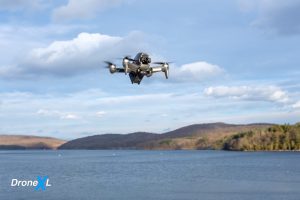
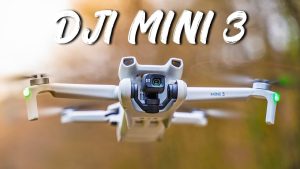





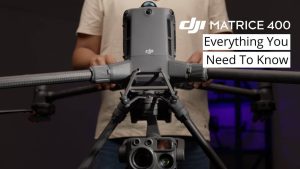
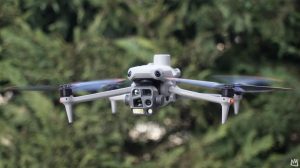
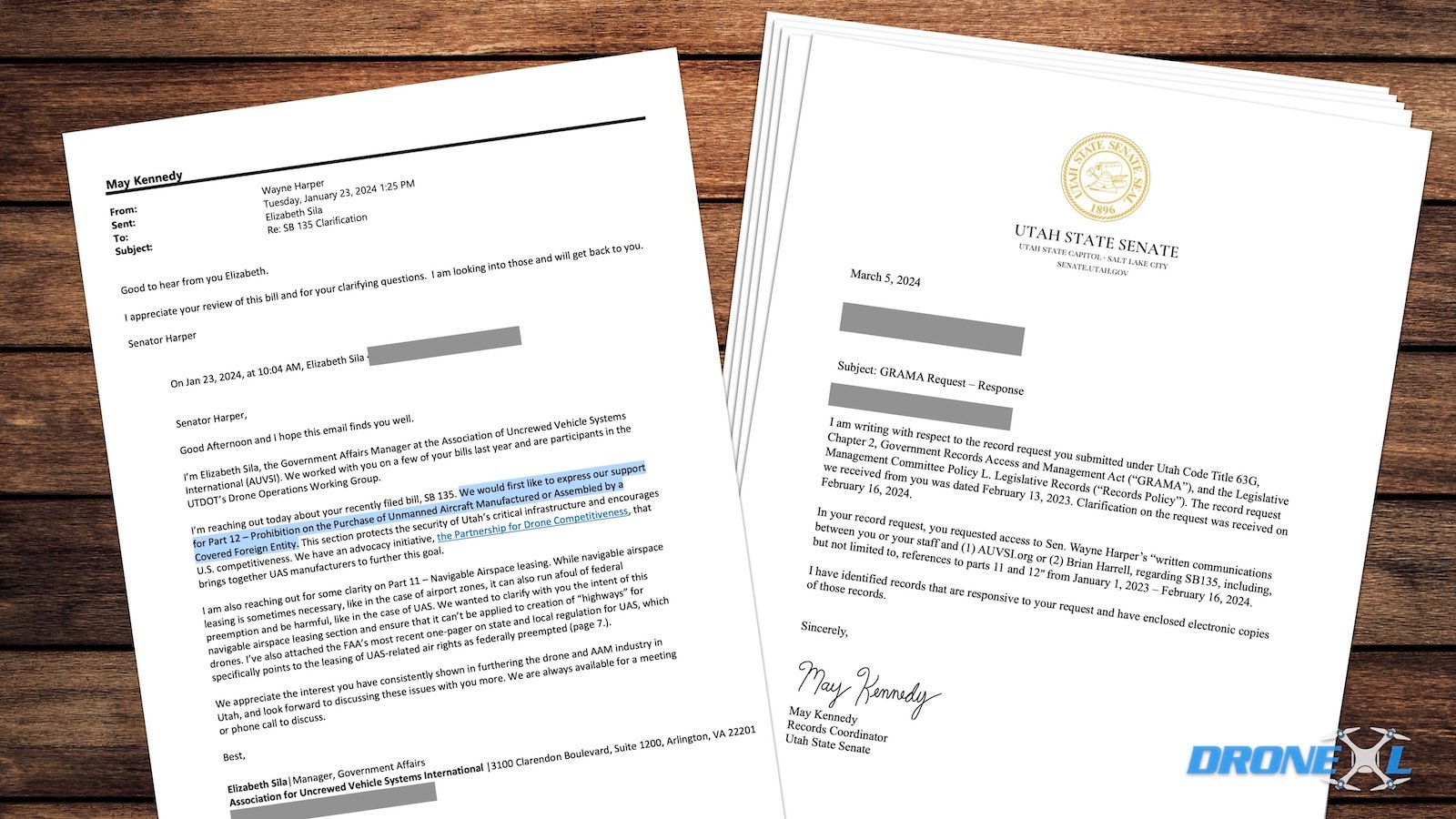

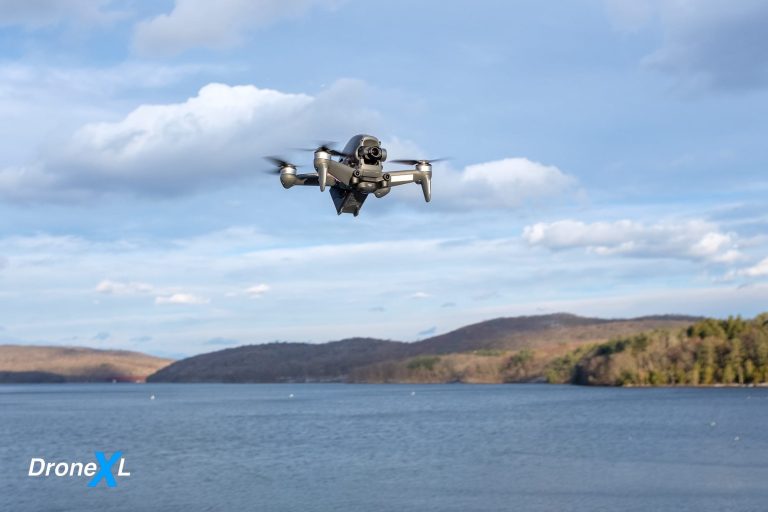
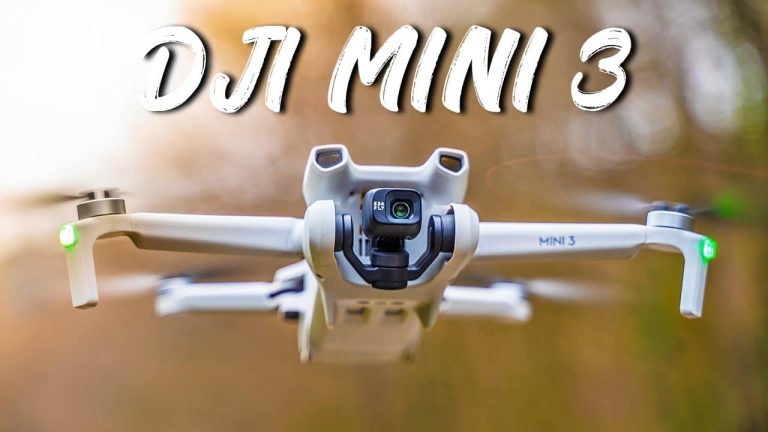



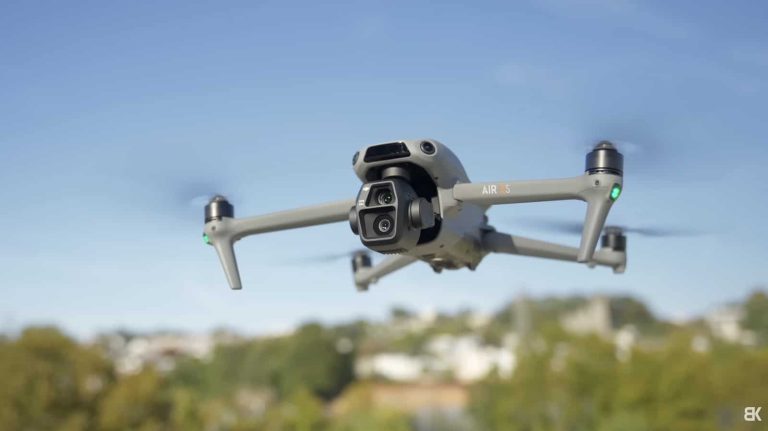
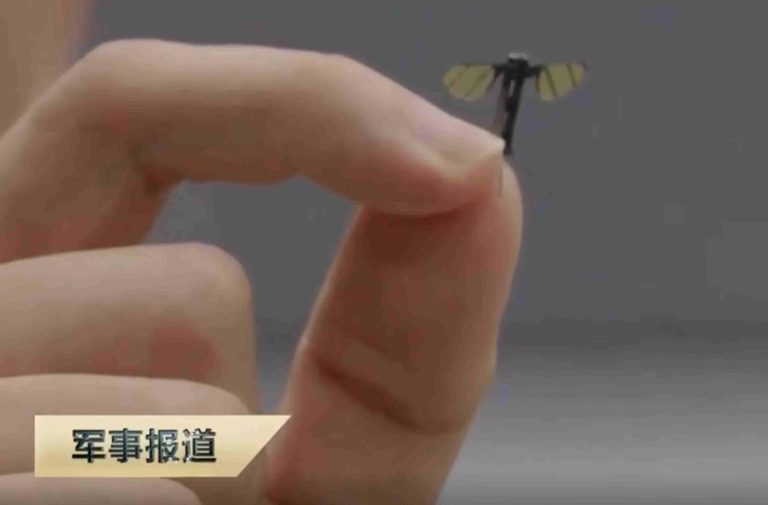
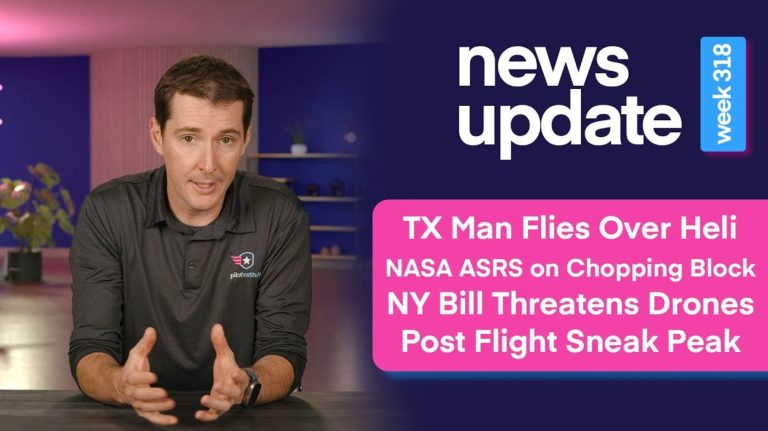
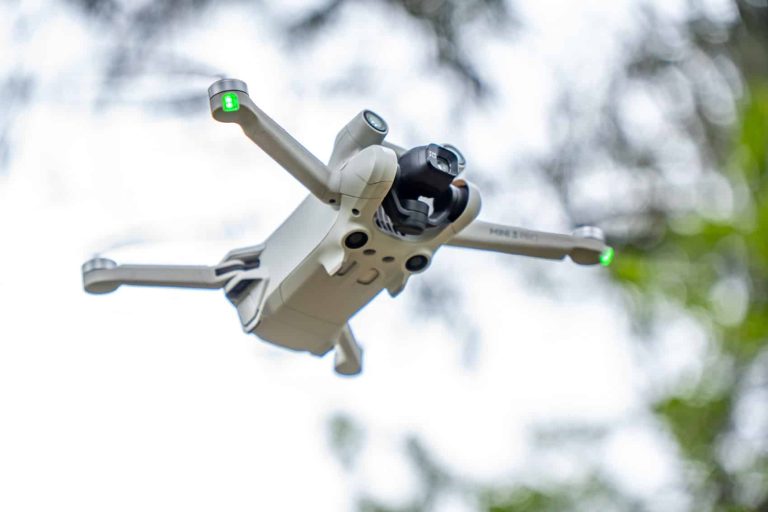
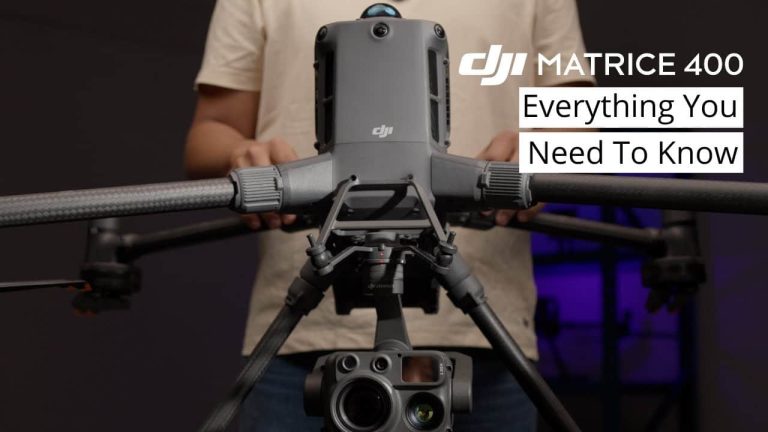
+ There are no comments
Add yours